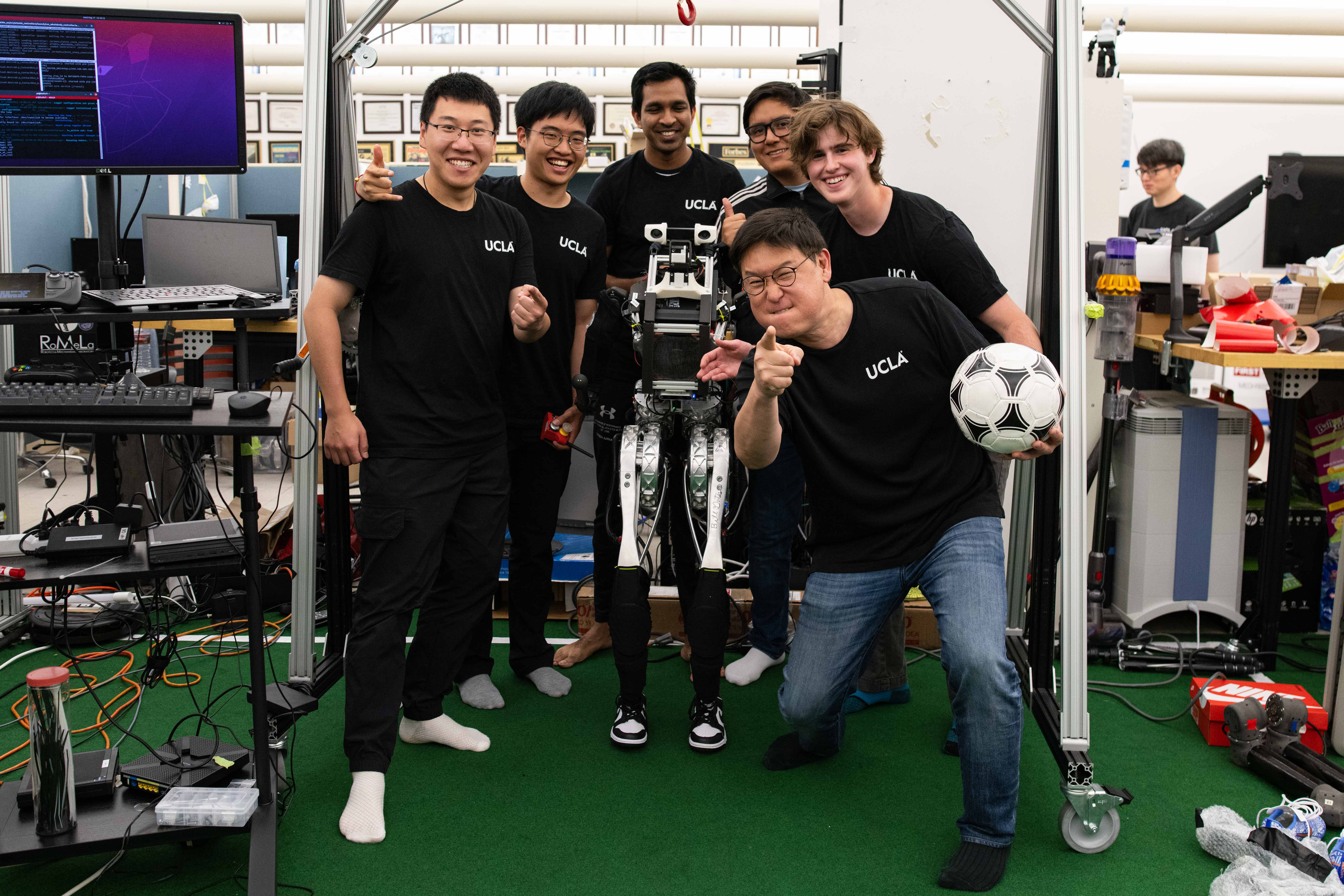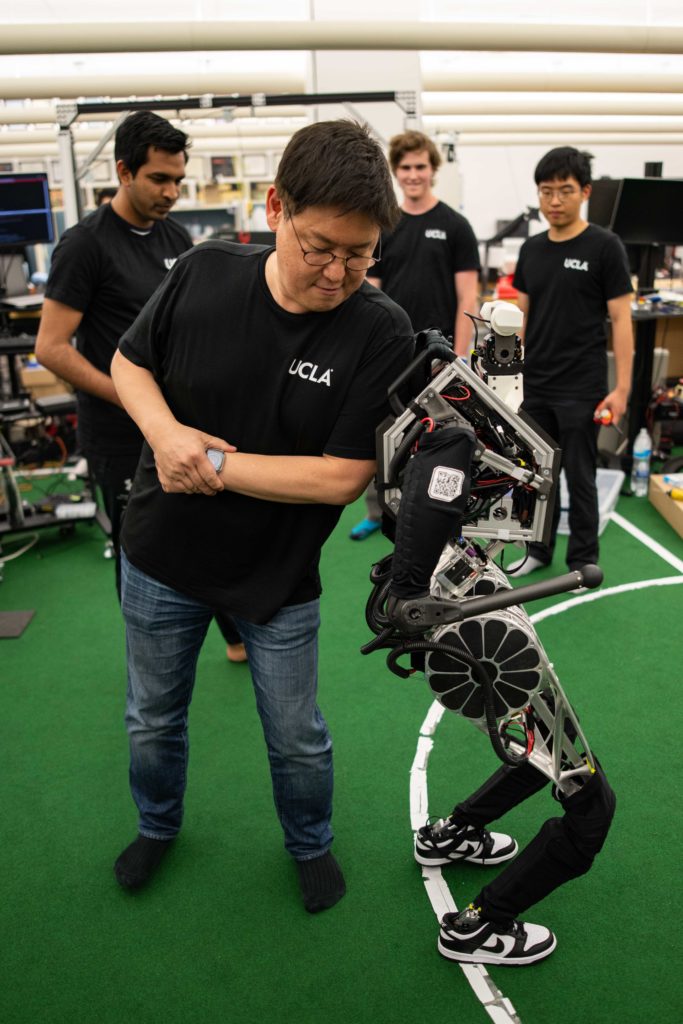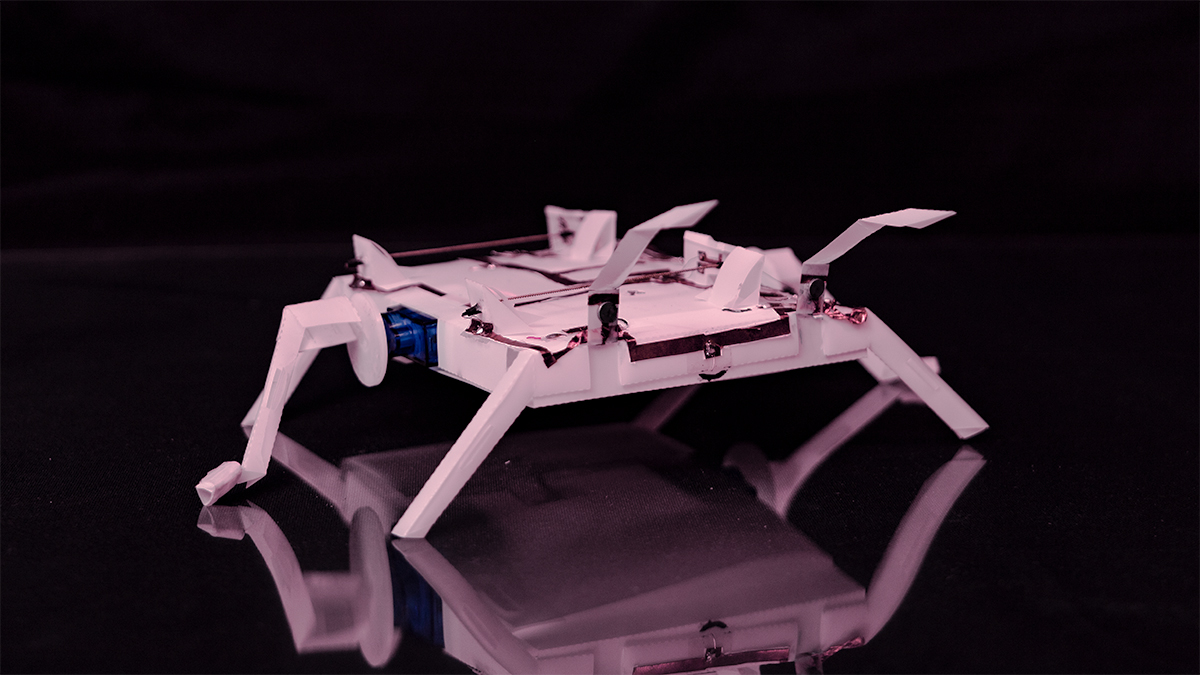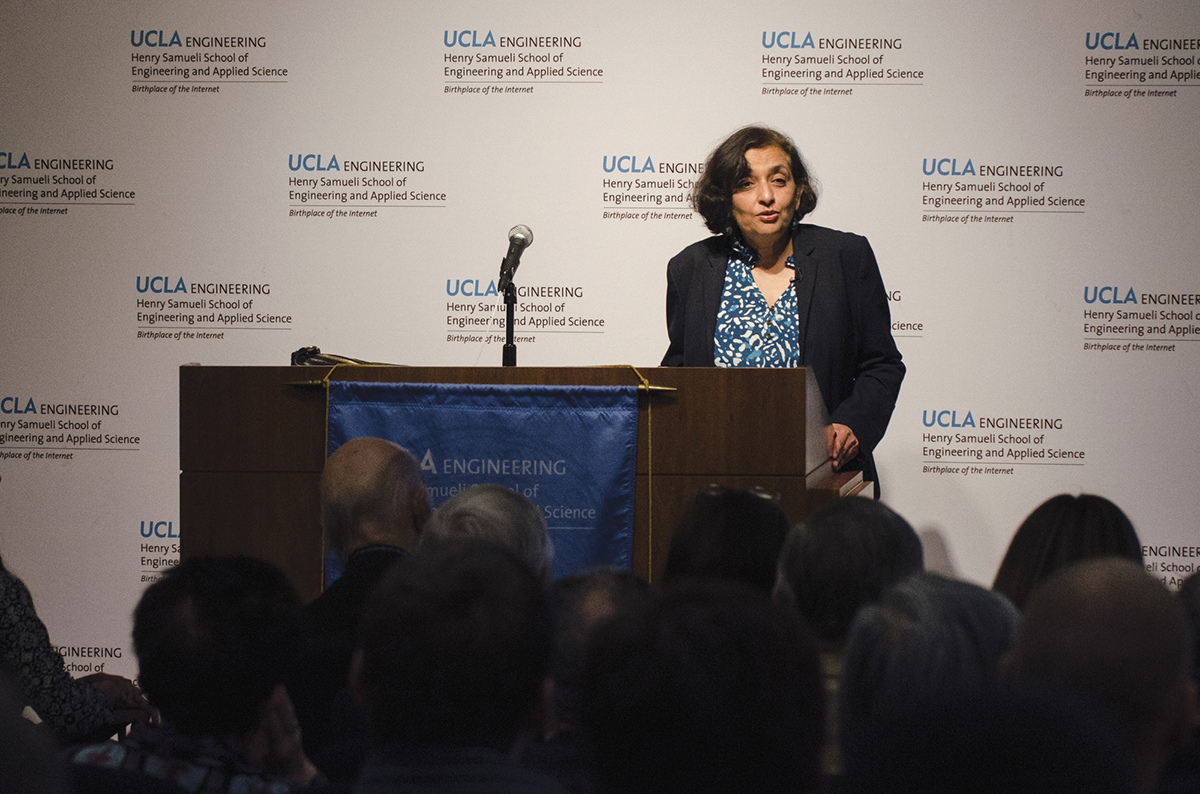Meet ARTEMIS – the soccer-playing robot created by UCLA researchers

Researchers working on the project with the ARTEMIS robot are pictured. The robot was designed to play soccer and has had public displays on UCLA’s Intramural Field.(Brandon Morquecho/Daily Bruin)
By Christopher Mancini
May 24, 2023 12:12 a.m.
One of Luke Mariak’s favorite memories is of a Nike shoe on UCLA’s Intramural Field aiming toward a soccer ball.
The shoe, however, was not his own — it was that of Advanced Robotic Technology for Enhanced Mobility and Improved Stability, or ARTEMIS, a soccer-playing robot built by researchers alongside Dennis Hong, a professor of mechanical and aerospace engineering. Mariak, a third-year mechanical engineering student, said this was a chance to show his friends his work on the robot in action. Mariak has been working as a researcher for Hong since October of last year.
“One specific moment is when we have ARTEMIS running or walking on that field (Intramural Field). Everyone’s looking at ARTEMIS, and it’s just awesome that I am doing this,” Mariak said.
Hong, who leads the Robotics and Mechanisms Laboratory at UCLA, said over the course of the last two decades, he has made it his mission to see robots used more in everyday life. Before ARTEMIS, Hong said he had made a series of robots capable of simple tasks such as dancing, climbing cliffs or cooking food.
“The technologies and things that we do in our lab can really give people happiness and really change the world,” Hong said.
Hong added that his interest in making a soccer-playing robot followed his passion for the RoboCup robotics competition, which features several teams from around the world competing in a soccer tournament. The goal of RoboCup is to create a team of robots capable of beating the human world champions by 2050.
However, one of the most challenging issues in robotics today is the issue of robot balance, Hong said. The many moving components and uneven weight distribution can lead robots to have clunky, uncoordinated movements.
Hong said his team has developed two new approaches to the issues with balance. One innovation was the custom design of ARTEMIS’ legs, which was partly done by artificial intelligence, to mimic biological muscles and the use of mechanical toes to increase the foot’s mobility. Hong added that the use of electrical rather than hydraulic control systems creates more fluid robot motion.
These two developments allow ARTEMIS to walk, run, kick a soccer ball, jump and remain upright and balanced even after being disrupted by a punch, shove or kick, he said.

Hong said that everything that happens at RoMeLa is recorded, and students often spend long nights working in the lab. One of Hong’s favorite memories was witnessing ARTEMIS jumping for the very first time at 4 a.m. over a livestream.
Though people have criticized the soccer-playing robots for their lack of utility, Hong said he believes it is an important step toward developing robots that could serve in more critical positions, such as firefighters or safety inspectors.
Hong’s students said they hope to use what they have learned while working on ARTEMIS to create a more convenient world with robotics. Justin Quan, a mechanical engineering doctoral student who joined the lab in 2016, said that from building Legos as a kid to participating in high school robotics and now working on ARTEMIS, he has always been interested in how robots can be used to fix problems.
Growing up, Quan said his mother was often sick and liked to joke that he could design her replacement robotic parts and turn her into a bionic woman.
“And I’m like, ‘I’d love to do that for you, Mom’” he said. “I can build a machine that can actually make a difference in someone’s life.”
Mariak said his work on the toes and feet of the robot has inspired him to pursue work in prosthetics.
“I like working on this foot stuff,” Mariak said. “This is actually almost directly applicable to human feet and human motion.”
Hong said he credits his students with many of the accomplishments that have been made on ARTEMIS, adding that he believes that making his technology open-source is important in ensuring it can have the maximum societal impact.
He added that at UCLA, new inventions like ARTEMIS will not only keep the university at the forefront of robotics research but also potentially become a part of daily life at the school. In the near future, Hong also hopes to build a similar robot that will also connect to university pride, he said.
“We’re also going to have a Bruin version with a bear head, so it’s going to be the ambassador (project ambassador),” Hong said. “Everybody’s going to recognize ARTEMIS as UCLA.”




